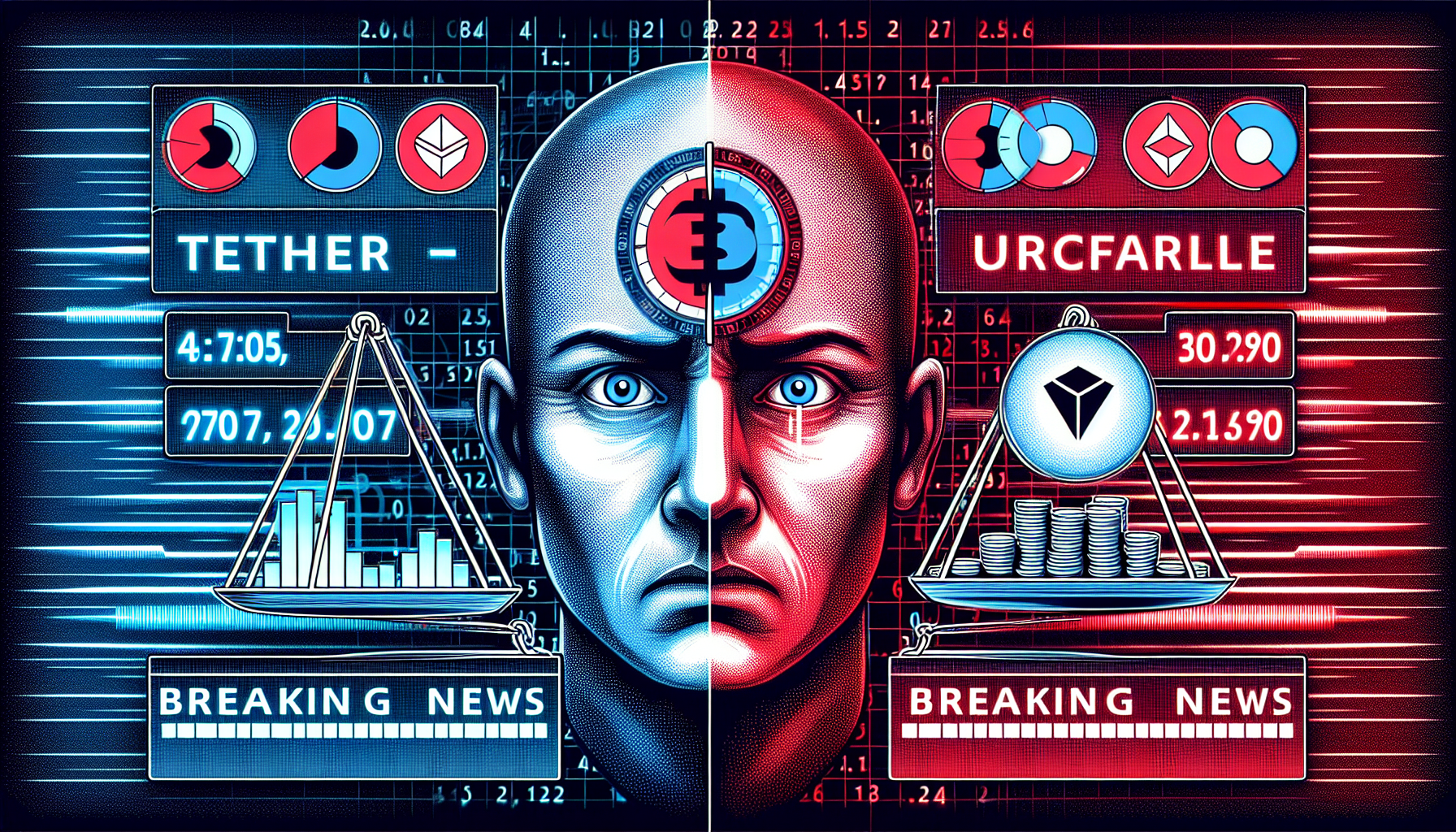
tl;dr
Tether and Circle's sudden $3B stablecoin minting spree has sparked outrage, with experts questioning their motives and transparency as regulatory pressures loom.
**Tether and Circle's Cryptic Stablecoin Minting Spree Sparks Community Concerns**
In the ever-evolving world of cryptocurrency, Tether (USDT) and Circle (USDC) have taken center stage with a sudden and aggressive surge in stablecoin issuance. Over the past 24 hours, the two companies minted nearly $3 billion in fresh tokens, a move that has left the crypto community both intrigued and wary. Despite the stable transaction volumes of USDT and USDC, the rationale behind this rapid expansion remains shrouded in mystery, raising questions about the motivations of the industry’s largest stablecoin issuers.
### A Market in Flux: Minting Amid Uncertainty
The stablecoin market has reached unprecedented heights, with token supply and trade volumes hitting all-time highs last month. However, much of this activity is suspected to be driven by automated bots rather than genuine user demand. Amid this frenzy, Tether and Circle have embarked on a minting spree to solidify their dominance. Tether, in particular, has been prolific, issuing around $5 billion in new stablecoins just a week and a half ago. Circle, while less aggressive, has also been steadily increasing its token supply.
This surge in liquidity injections is intended to bolster the Web3 ecosystem, but the timing and scale of the activity have sparked debate. With the crypto market already saturated with stablecoins, the question remains: why are these companies minting so aggressively? Neither Tether nor Circle has provided clear explanations, leaving analysts and investors to speculate.
### Community Skepticism and Unanswered Questions
The lack of transparency has fueled skepticism among users and experts alike. While Tether and Circle claim to back their stablecoins with reserves, neither has undergone a third-party audit—a critical requirement for trust in the crypto space. This absence of independent verification has led to growing concerns about the stability and legitimacy of their reserves.
Moreover, transaction volumes for both USDT and USDC have remained relatively stable, casting doubt on the need for such a massive influx of new tokens. Some social media users have even speculated that the minting could be part of a coordinated “market pump,” a tactic used to artificially inflate prices. While there’s no concrete evidence to support this theory, the timing coincides with broader bearish signals in the crypto market, further complicating the narrative.
### Regulatory Threats and Compliance Gaps
The situation is further complicated by looming regulatory pressures. The proposed **GENIUS Act** could ban stablecoins unless they meet stringent compliance requirements, including regular third-party audits and holding U.S. Treasury bonds as reserves. Tether has thus far dismissed these concerns, but the lack of transparency around its reserve holdings remains a sticking point.
Both Tether and Circle have been purchasing U.S. Treasuries at a rapid pace, but experts argue that the amounts fall far short of what would be needed to back their outstanding stablecoins. This discrepancy has raised red flags, with some analysts questioning the long-term viability of these assets. Without clear evidence of reserve adequacy, the stability of USDT and USDC remains in question.
### The Road Ahead: Transparency and Accountability
As the crypto community awaits answers, the uncertainty surrounding Tether and Circle’s actions is likely to persist. The lack of third-party audits, opaque reserve management, and unexplained minting activities have created a climate of distrust. For investors and users, these issues underscore the importance of regulatory clarity and corporate accountability.
Until Tether and Circle provide concrete explanations for their behavior and demonstrate robust compliance measures, skepticism will continue to loom over their operations. In an industry built on trust, the failure to address these concerns could have lasting repercussions—not just for the companies involved, but for the broader stablecoin market.
The coming months will be critical. Whether Tether and Circle can navigate these challenges while maintaining their market leadership remains to be seen. For now, the crypto world watches closely, hoping for the transparency and answers that could either solidify their positions or accelerate their decline.